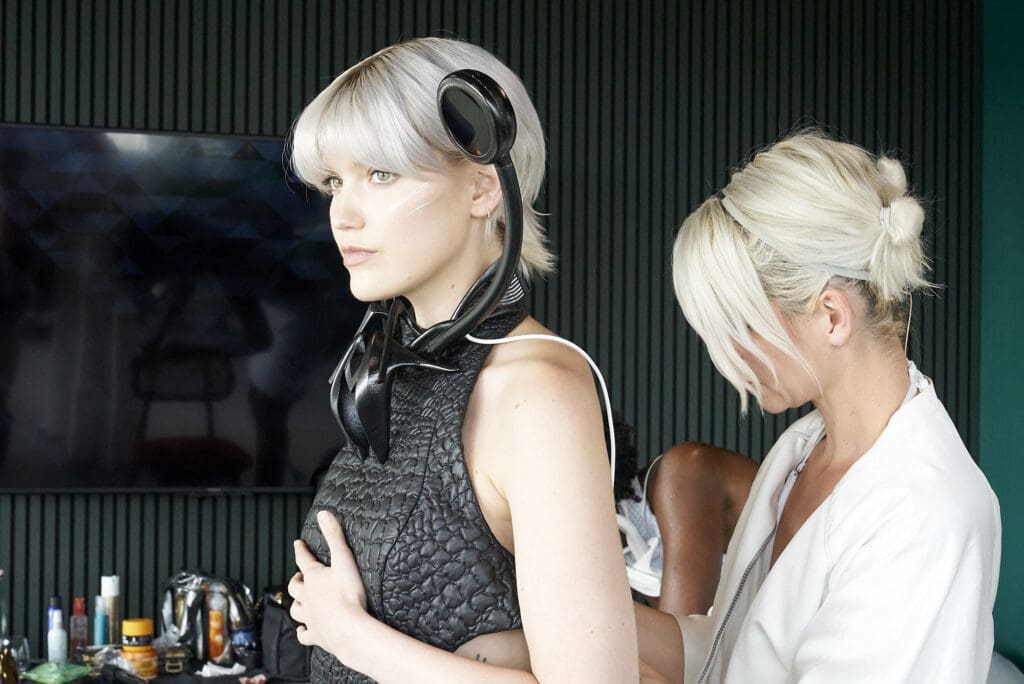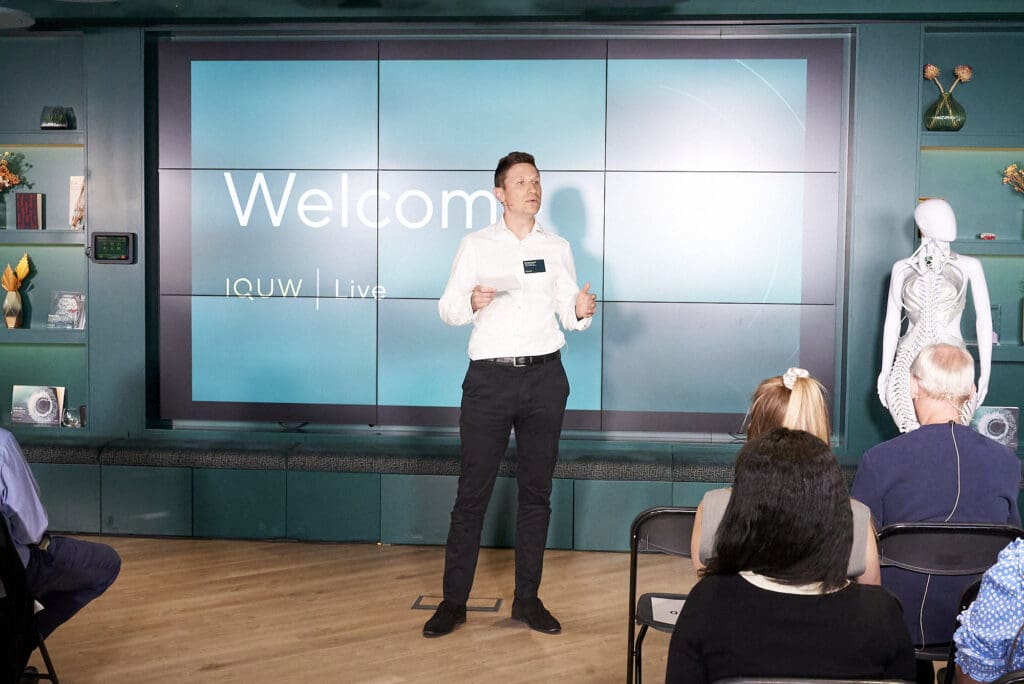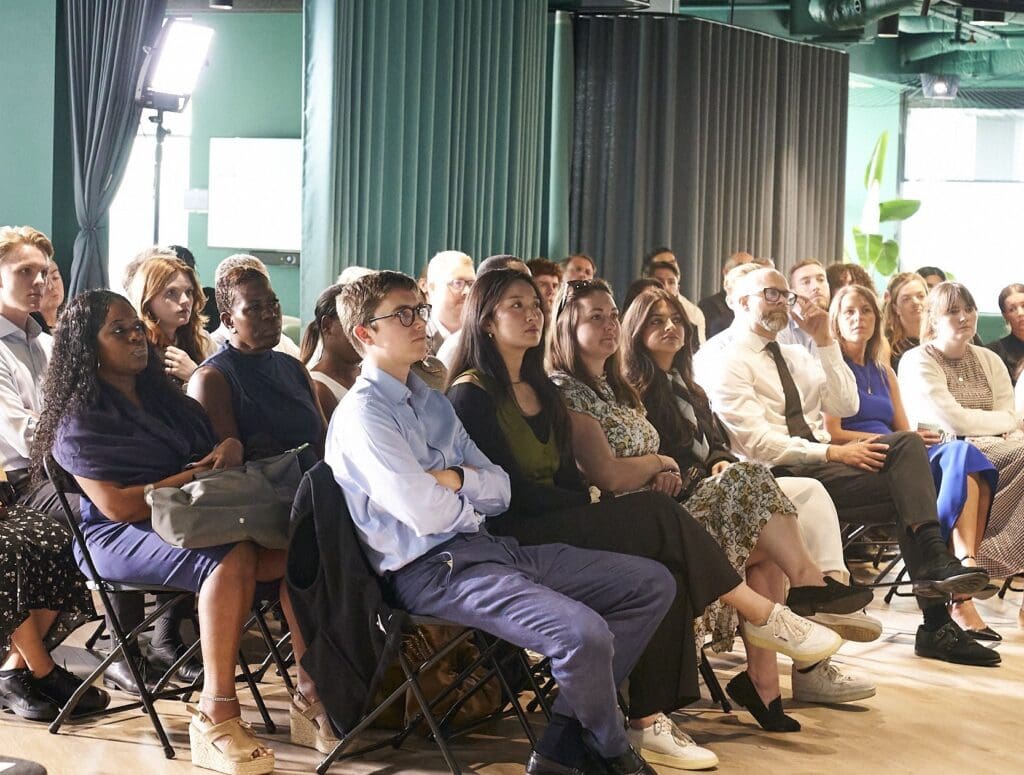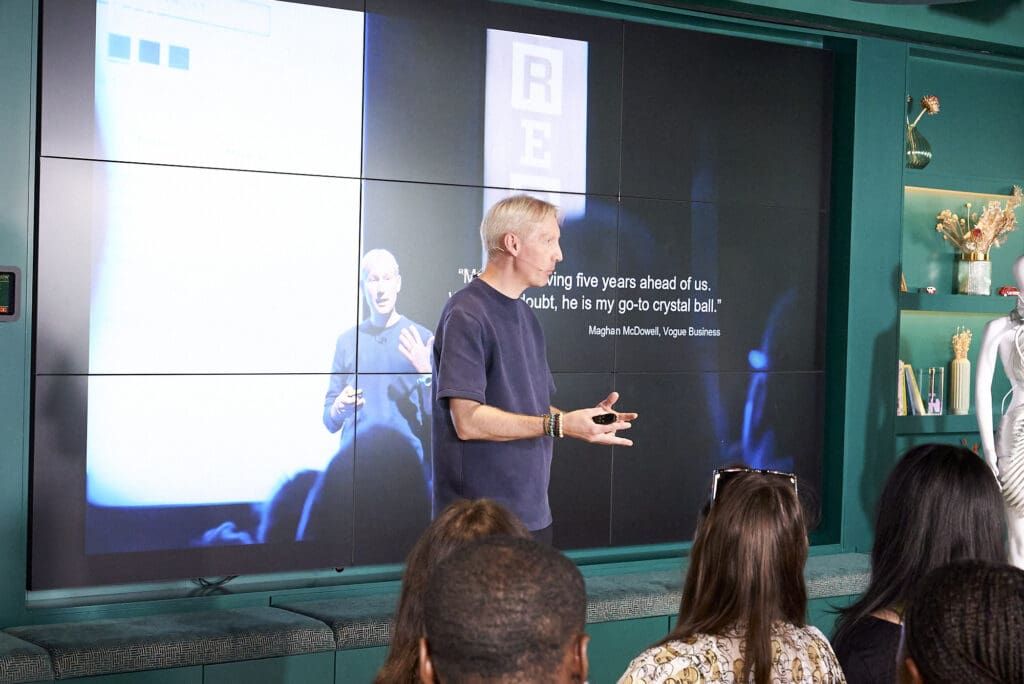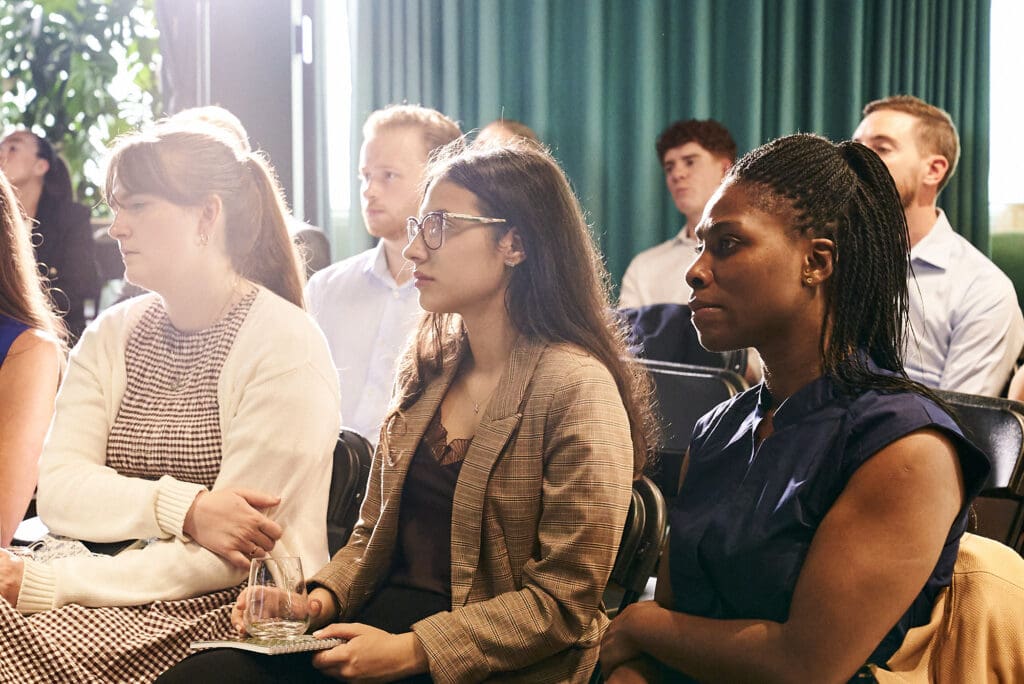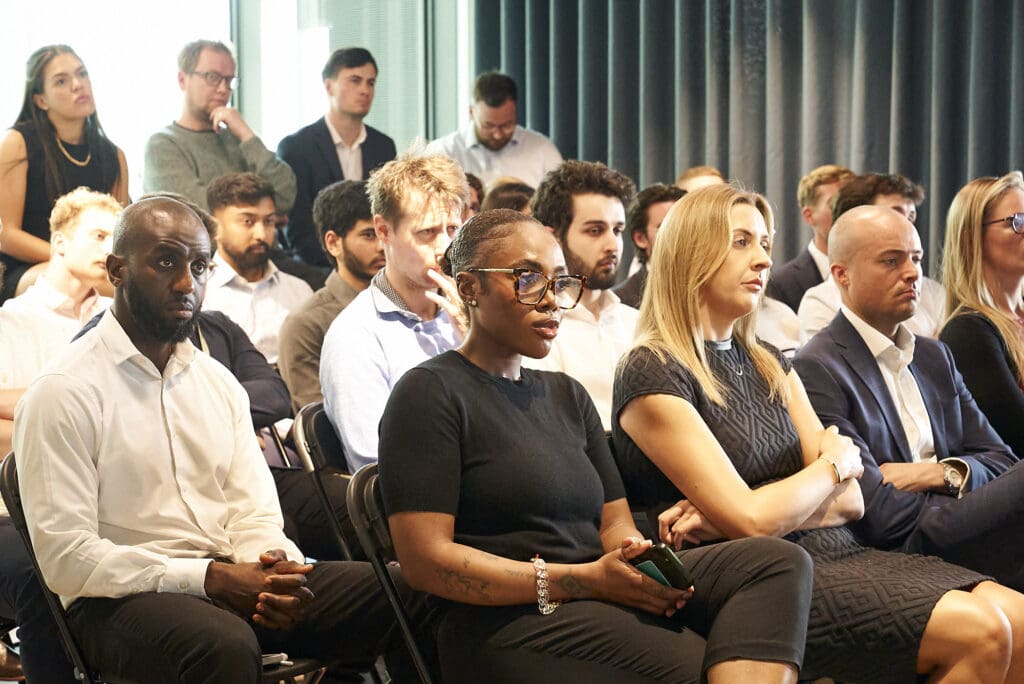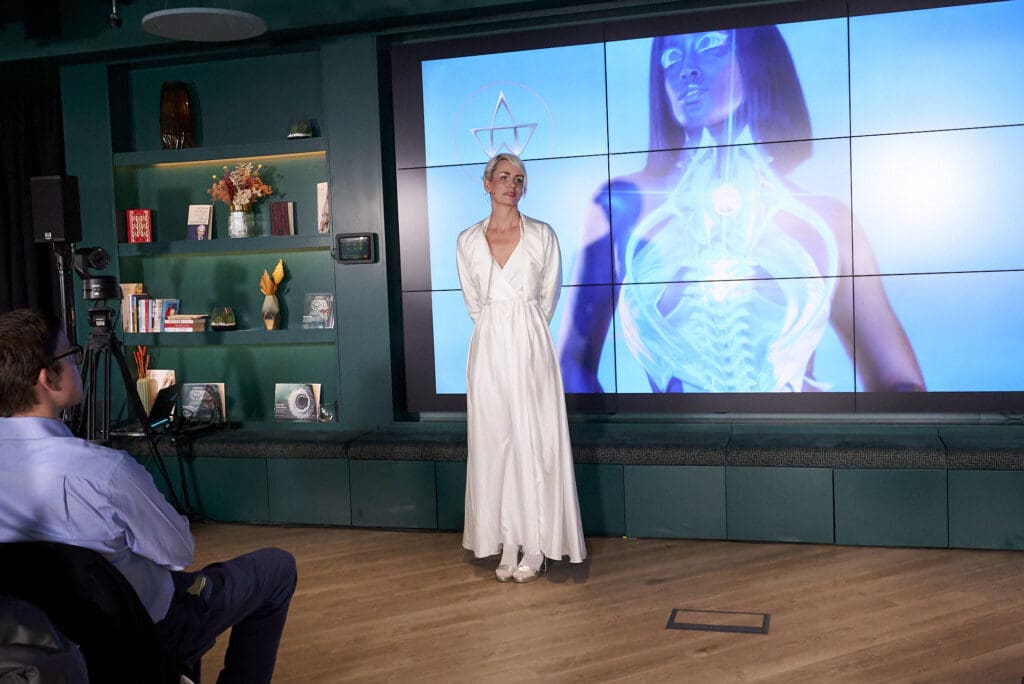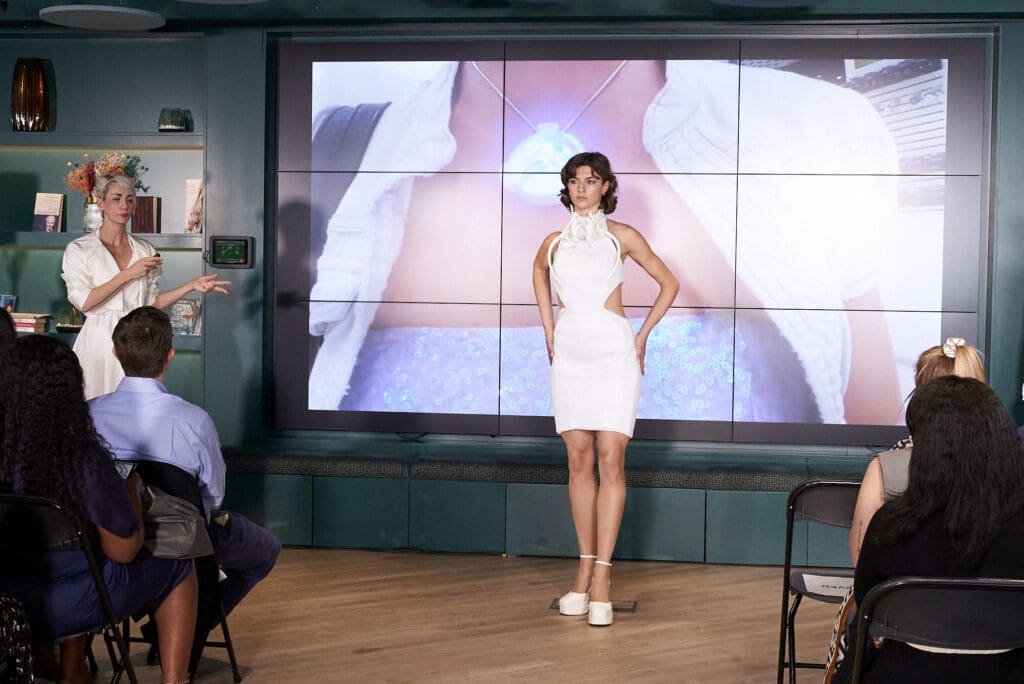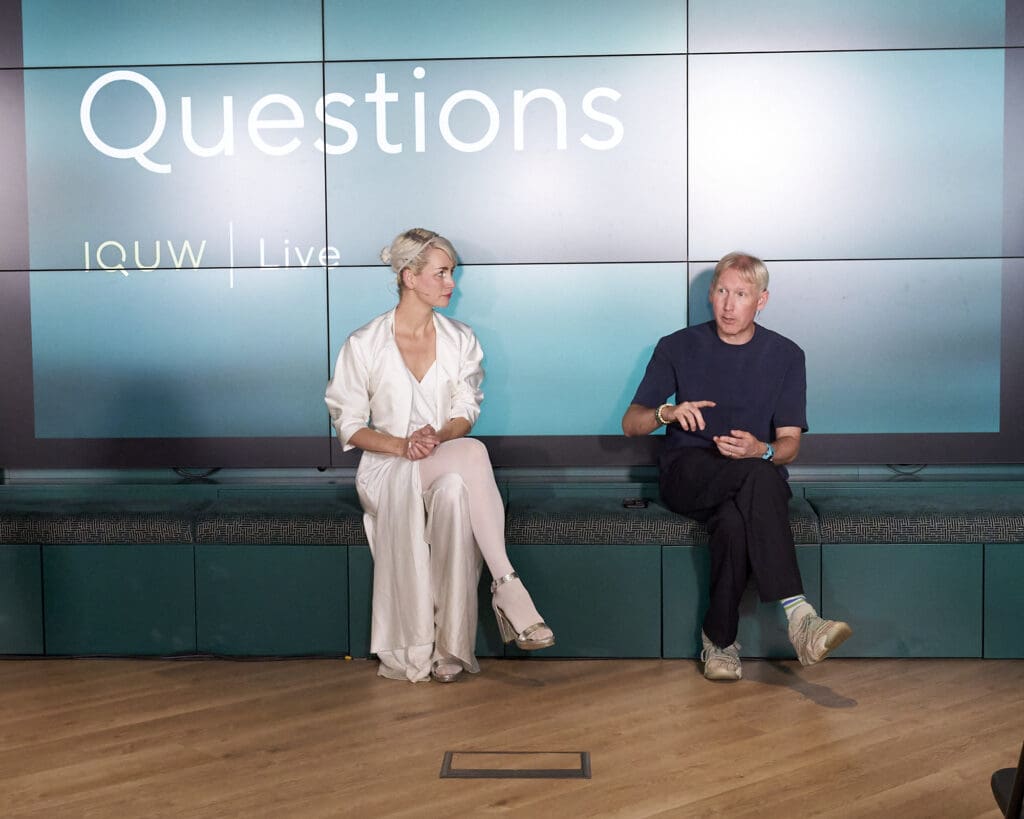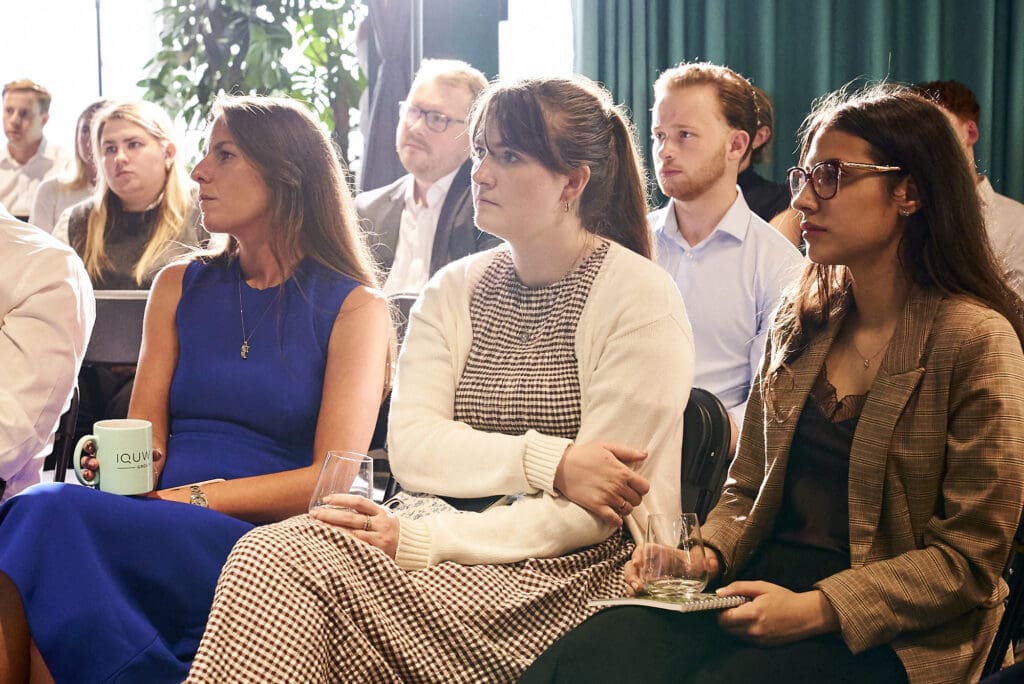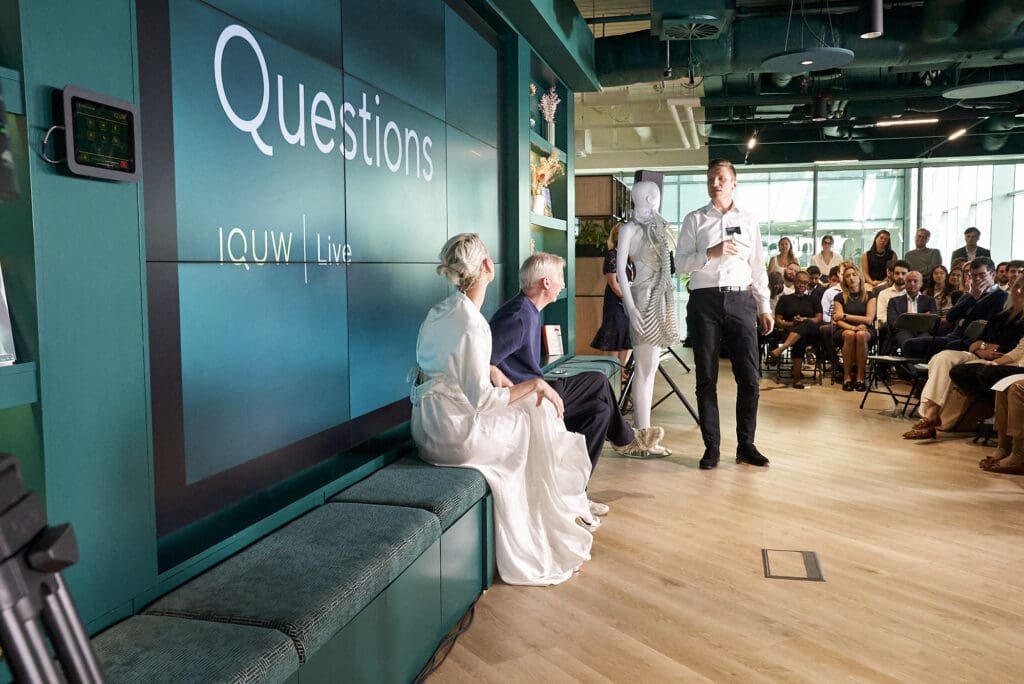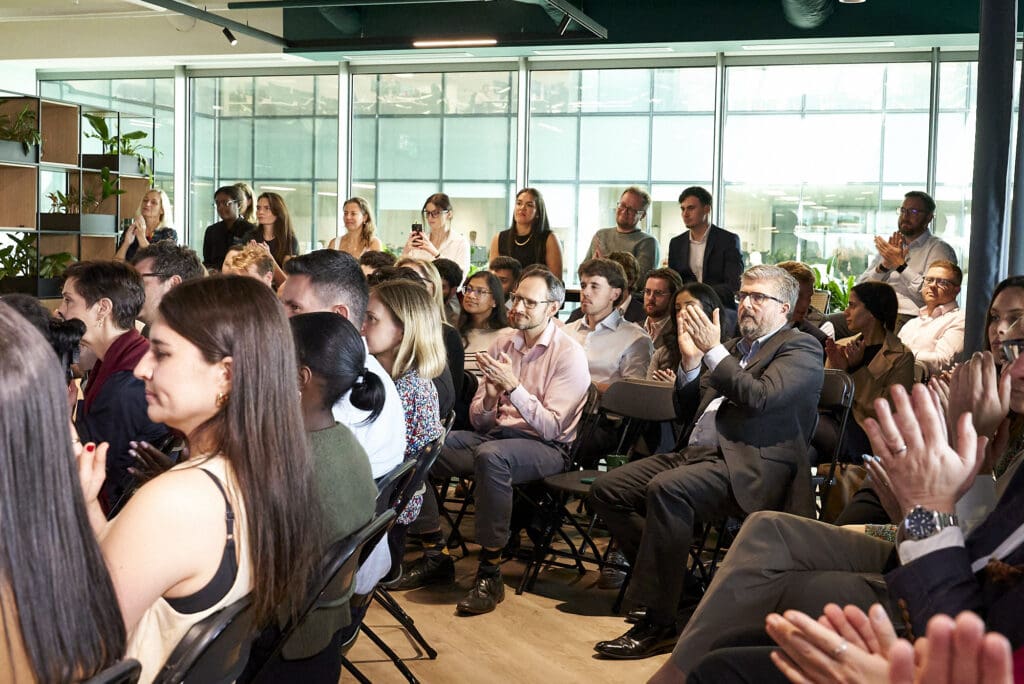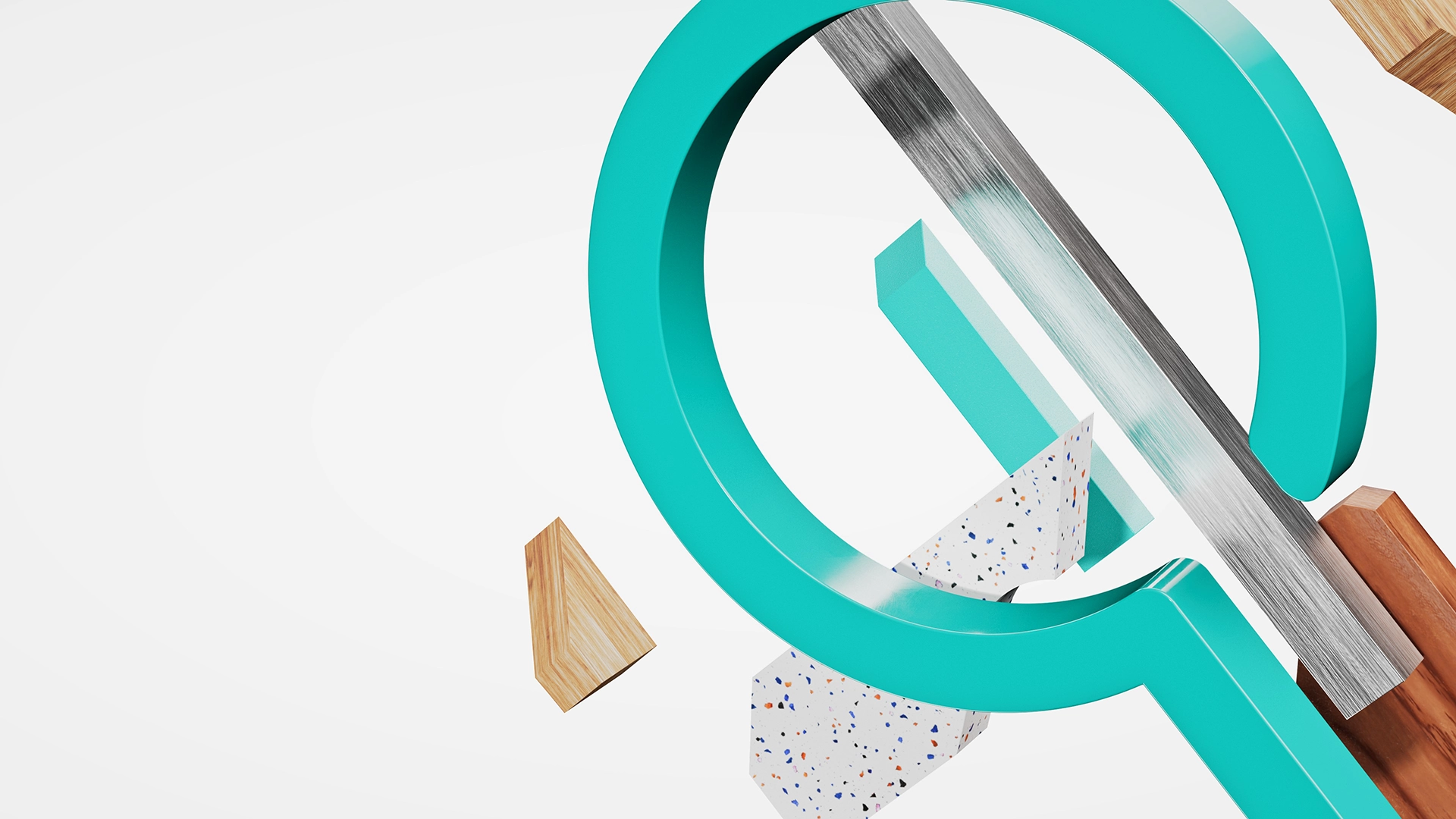We rely on smart technology every day – from digital assistants automating our homes, video doorbells that keep us connected wherever we are and wearables that track our health, fitness and sleep. But what if your clothing could interact with the world around you? What if a fashion shoot could happen anywhere, without a model ever stepping out of the studio?
At the latest IQUW Live event, guests were treated to an inspiring glimpse into this future. Matthew Drinkwater, Head of Fashion Innovation Agency at London College of Fashion, and FashionTech Designer and Engineer, Anouk Wipprecht shared how technology is reshaping the future of fashion.
Fashion and Technology: A Perfect Match
Matthew leads a groundbreaking team pioneering wearable tech, digital 3D design and augmented reality. His mission? To bridge the gap between the physical and digital worlds and transform how we create, experience and buy fashion.
“There is a huge amount of money being invested in augmented reality and wearable technology,” he said. “Every single major technology player is developing augmented reality (AR) glasses, whether that’s Meta, Google, Snap, or Apple. [Their new hardware] is going to change how we interact with each other and the kinds of experiences that we can have.” These shifts are backed by staggering investment, with $1 trillion expected to support AI in the coming years.
Reimagining Reality
Matthew’s team uses advanced 3D scanning technology, including a photogrammetry ring with 136 cameras capturing ultra-realistic digital doubles. In trials on e-commerce platforms, these lifelike 3D models increased click rates by up to 40%, boosted conversion and reduced returns.
Their work doesn’t stop at realistic visuals. Using dynamic cloth simulation and motion capture, they’re bringing fashion to life in completely new ways. Soon, customers could be “trying on” clothes virtually with unprecedented realism – all through a pair of AR glasses.
“[This technology] will change the way in which computers see the world,” Matthew said, highlighting examples such as London’s Outernet immersive venue and ABBA Voyage, to show how digital experiences are creating new economic and cultural value.
Altered Images
The team’s experiments also include volumetric video capture to create 3D fashion films and digital clothing projects. Tools like Sketch to Animation let designers transform ideas into animated concepts instantly. Meanwhile, virtual try-on tech allows a model to showcase outfits from anywhere in the world without traveling – with the potential to revolutionise fashion marketing and production.
“Everything in how we create fashion is being impacted by technology. Every way in which we communicate fashion is impacted by technology, and almost every way that we consume fashion is going to be impacted by this technology” Matthew concluded.
Introducing FashionTech
Anouk Wipprecht began combining robotics with fashion at just 17. Her concept of FashionTech merges microcontrollers, sensors and avant-garde design to explore how clothing can interact with the mind and body.
When Dresses Think and Feel
Anouk’s creations are as intriguing as they are futuristic. Her famous ‘SpiderDress’ uses ultrasonic sensors to detect intruders and deploy robotic limbs to protect personal space. Inspired by an octopus, her ‘SmokeDress’ emits plumes when crowds gather, creating an expressive cloud of privacy.
The ‘MeteorDress’ connects to a global meteor network and lights up when meteors pass overhead, while her ‘HeartBeatDress’ reveals the wearer’s heart rate through shimmering crystal sensors.
Anouk is also fascinated by emotional expression through tech. Her ‘ScreenDress’, created with a neurotechnology partner, uses a brain-computer interface to display animated eyes that react to the wearer’s focus and emotional state.
“With these dresses, I’m trying to investigate and to research if and when we put technology on the body, what does it do? How can it become intelligent or playful, like the ScreenDress? How can it become defensive and behavioural, like the SpiderDress? Or how can it become expressive and sensitive or emotional, like the SmokeDress?” she explained.
The Open-Source Future
A strong advocate of open innovation, Anouk champions open-source design. Her ‘OpenSourceDress’, co-developed with students, features 3D-printed robotic parts that move organically, inviting others to iterate and build upon the concept.
“Technology came into our lives to help us,” she said. “What happens if these technologies get redeveloped in the way we interface with them [in a way that is] more connected to us and can listen to us.”
Looking Ahead
The convergence of fashion and technology isn’t just about bold new designs – it’s a powerful reminder of how rapidly industries can evolve when innovation leads the way. At IQUW, we believe that staying ahead means embracing change, challenging assumptions, and reimagining what’s possible. With our data-driven approach, we help clients navigate the complexities of an increasingly digital world, ensuring that innovation is supported and empowered by forward-thinking solutions.
